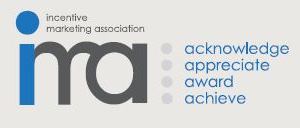
Keeping Them Healthy is Keeping Them Safe
Having a highly engaged workforce should be the goal of every department in a company. Engaged employees are simply far more likely to work harder, smarter, and safer.
- By Brian Galonek
- Jun 01, 2019
The interconnected worlds of wellness and safety are just now coming into view for many safety and HR professionals. If better understood, the correlation between the two can be leveraged to improve not just employee health and safety, but also employee engagement and corporate profitability.
What do obesity, tobacco use, stress, and high blood pressure all have in common? They are all safety issues. That's right, these things that we associate with health and wellness also relate directly to safety. Health and wellness issues, historically viewed as separate and distinct from safety, are now showing very clearly how interdependent they are.
Obvious correlations:
- Obesity leads to sleep apnea, which leads to tired driving, longer reaction times, and accidents. Obesity levels have doubled in the United States in the past 20 years.
- Smokers take more daily work breaks and have higher levels of absenteeism, which causes disruption. This puts additional stress on the workforce and leads to an increase in accidents and injuries. The average smoker takes roughly six days of smoke breaks per year.
- Stress leads to tired and distracted work, which leads to mistakes and ultimately to a less safe workforce. Seventy percent of workers with high levels of stress say that it impacts their work life.
Less obvious, but equally important correlations:
- Diabetes can lead to vision loss and other medical issues, which can affect a person's ability to get and/or keep a commercial driver's license.
- Hypertension, high blood pressure, and high cholesterol levels are all treatable conditions that, left untreated, lead to greater stress, physical and mental exhaustion, and safety-related problems.
- Workers who sit most of the day have twice the incidence of cardiovascular disease as compared with those that are on their feet most of the work day—"sitting is the new smoking."

When looking at these examples (and countless more), it's easy to see how interconnected health, wellness, safety, and overall job performance are. Only 20-30 percent of health issues are caused by genetics. The other 70-80 percent come from lifestyle choices, the environment, and access to care, and therefore they can be affected in a positive way.
The questions then become, what can an employer do about it, and is it even their responsibility?
Speaking to the second question, in some circles you will hear a great deal of push-back against the "nanny state"—the notion that corporations, by taking on these issues, are taking on the role of "household nanny" by trying to steer their employees to make good decisions. After all, goes the thinking, people get to make their own choices, and it should not be up to their employer to help them make the right choices. The question really comes down to how we view intrinsic vs. extrinsic motivation, and the reality is that far more people are extrinsically motivated, meaning that they can be influenced in the right direction in ways that benefit both them and their employer.
It is also important to note that the younger the business leader, the more likely they are to believe that the employee/employer relationship is a partnership and as such should be mutually beneficial beyond the basic notion of working for pay. Younger workers are more receptive to health and safety recognition/rewards programs and more likely to believe that, given the large percentage of our lives we spend working, we should be able to pursue a healthier lifestyle both at work and on our own time.
In the end, this is the ultimate win-win-win scenario in which a safer and healthier workforce will benefit not just the workers, but also their employers and shareholders alike.
Making Better Connections
There is an old expression that "employees don't leave companies, they leave managers." As much as anything, that expression relates to how well managers and employees connect. The most obvious issue on which managers and employees connect centers on job performance. Unfortunately, it is far more likely that those interactions will occur when an employee has done something wrong in the eyes of the manager, as opposed to something right. It is much easier to point out mistakes than it is to deliver positive recognition and feedback. This fact is undoubtedly the reason why "lack of recognition" is one of the top issues cited by former employees as to why they quit their job.
Enter now a well-structured safety, health, and wellness program, one that makes it easy for managers to recognize and reward workers for going "above & beyond" to work safer and lead a healthier lifestyle. By creating such a program, employers will have created a natural way to enable their managers to better connect with employees and to do so in a way that is mutually beneficial. A properly executed program will provide social reinforcement (the "pat on the back"), build camaraderie around workplace health and safety issues, and will deliver timely positive recognition, which is the most important aspect of engaging employees.
Having a highly engaged workforce should be the goal of safety, HR, operations, sales and every other department in a company. Engaged employees are simply far more likely to work harder, smarter, and safer, to the great benefit of both them and their employer.
Keys to Success
Perhaps the most incredible thing about these programs is that they are inexpensive and yet deliver an outstanding return on investment if built properly. As a good starting point, companies should consider putting 0.5% of employee compensation into a well-structured employee "total rewards" platform. Such a program should be custom branded for maximum success and should provide different departments the ability to easily use the platform to deliver timely employee recognition and rewards built around not just health and safety, but other initiatives, such as peer-to-peer recognition, employee development programs, training reinforcement, service awards, and more. Offer your employees a 0.5% raise to accomplish all these things and you will literally see no behavior change whatsoever. Put that 0.5% into building a sustainable program and rewarding performance within that program, and you will move the needle measurably every time.
So where will the 0.5% come from? While it is a small percentage, it can still add up to big dollars in larger companies. Given how budgets work, the money is not likely to be just lying around some place waiting to be deployed. A good place to start is by taking inventory of all the disjointed programs that your company may be utilizing now to see where current resources are being deployed inefficiently and repurpose those dollars. The beauty is that, with multiple overlapping goals, it becomes much easier for departments such as HR, safety, operations, sales, and more to create a sustainable budget and generate a multiplying effect in the process. Another place to look for funding is from your insurance providers (or, if self-insured, from your own savings). As the number of safety incidents decreases and the health of your workforce increases, you will be able to negotiate better rates with your insurance providers.
These programs have multiple keys to success, and it is crucial to get them right or the program will fail to deliver the expected results. The six most important keys are:
- Branding and Communicating. People respond to brand names. A company's program should be custom branded and communicated often through multiple channels.
- Build and Sustain Participation. Have multiple registration events, introduce the program immediately to new hires, and add new safety- and wellness-related challenges to keep it from stagnating.
- Individual and Group Recognition. On the safety side, primarily reward the individual for specific accomplishments while communicating group goals. On the wellness side, be sure to recognize and reward often with small "nudges" targeting both individual and group accomplishments.
- Tangible Awards. To be effective, the awards must be memorable, so offer only tangible brand name awards and experiential travel. Do not use cash or cash-like substitutes that do not elicit an emotional response and are too easily forgotten. Also, be sure to offer a broad selection of awards.
- Measure Everything. Diligent measurement is necessary for continual improvement. Measure not just the obvious things, such as reductions in accidents and lost work time, but the less obvious things, such as turnover, net promoter scores (NPS), and employee engagement levels.
- Leadership Involvement. Enthusiastic participation by managers is a key way to get the greatest participation by all. Leaders need to lead, and these programs are a great way to do it!
This article originally appeared in the June 2019 issue of Occupational Health & Safety.